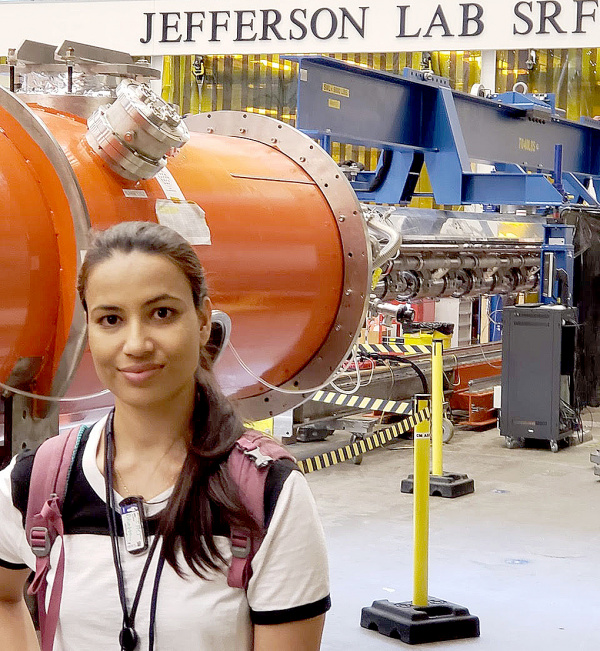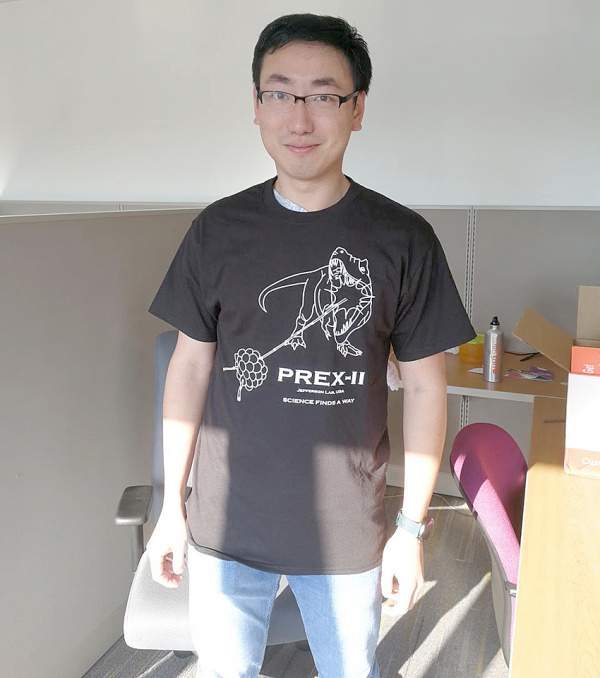Tech faculty, students part of groundbreaking research

Courtesy photos
Devaki Bhatta Pathak, a 2020 Tech graduate, joined a team of international researchers who have helped to measure the neutron distribution in the nucleus of lead.

Louisiana Tech physics doctoral student Yufan Chen, a 2020 graduate of Tech, worked with experts from 32 prestigious institutions around the world in publishing groundbreaking research.
Rakitha Beminiwattha, PhD, assistant professor of physics at Louisiana Tech University, and Louisiana Tech physics doctoral students Yufan Chen and Devaki Bhatta Pathak (who graduated in Winter Quarter 2020), were among a team of international researchers who have helped to measure the neutron distribution in a heavy nucleus, specifically, that of lead, and published the most precise measurement to date of the neutron distribution from the Lead (Pb) Radius Experiment (PREX) at the Thomas Jefferson National Accelerator Facility in Virginia.
Working with experts from 32 prestigious institutions around the world, Beminiwattha, Chen, and Pathak have determined that the heavy nucleus of lead has an unexpectedly thick skin of neutrons; this layer of neutrons on the outside of a lead nucleus is twice as thick as physicists previously thought.
“We just published the most precise measurement yet of the neutron distribution in a heavy nucleus,” Beminiwattha said, “with implications for the structure of neutron stars. The result tells us that Neutron stars are stiffer and bigger than theory generally predicts. I am extremely proud of the contribution Louisiana Tech has made to this experiment and of the work Yufan and Devaki have done in this research. This research could change the way physics is taught.”
“I am so proud to have contributed to this experiment,” Pathak added. “As a graduate student, it was a great experience to learn the scientific methodology and see the scale and complexity of a nuclear physics experiment. I would like to thank Dr. Rakitha, the Jefferson Lab scientists, and Louisiana Tech for all the support.”
This research has implications for the structure of neutron stars, indicating that they are stiffer and bigger than theory predicts. Soon, the team expects the results of a related experiment that Beminiwattha, Chen, and Pathak also contributed to.
Beminiwattha said that those results are expected to further improve our understanding of neutron-rich nuclei.
“The research will help to solve one of the great mysteries of astronomy: how big neutrons’ stars are, and help us better understand why elements in the Periodic Table are stable and why certain isotopes are unstable.
“There were dozens of graduate students and undergraduates who worked on this experiment including two graduate students from Louisiana Tech,” Beminiwattha said. “With the great mentoring and training they received, these students will become the next generation of scientists to lead the future of basic science research.”
“While working on the project,” Chen said. “I have realized that how strange and yet harmonious our world is connected, from the small tiny particles to the massive gigantic stars.”
The Louisiana Tech team was supported by the Board of Regent Research Competitiveness Subprogram Grant, which Beminiwattha says was invaluable for Louisiana Tech’s contribution to this experiment.
The research was reviewed in the This Week in Physics publication.

